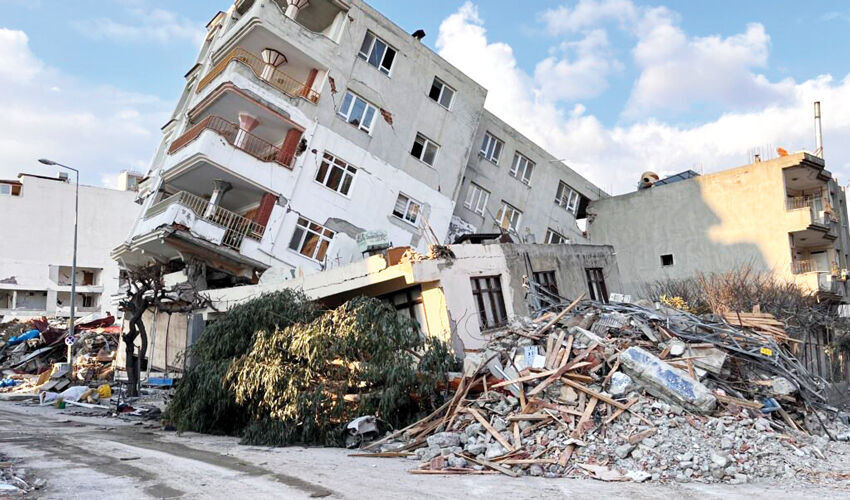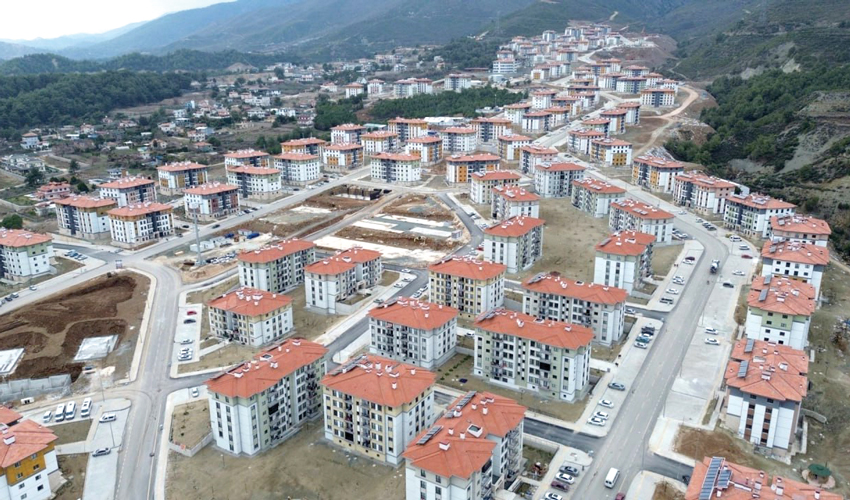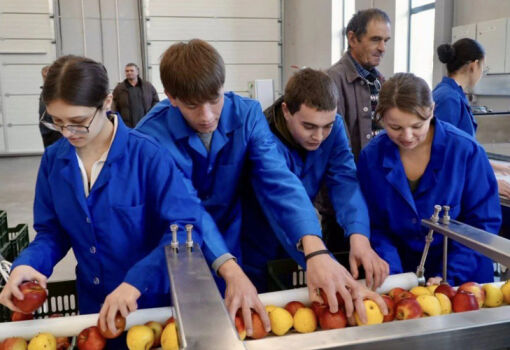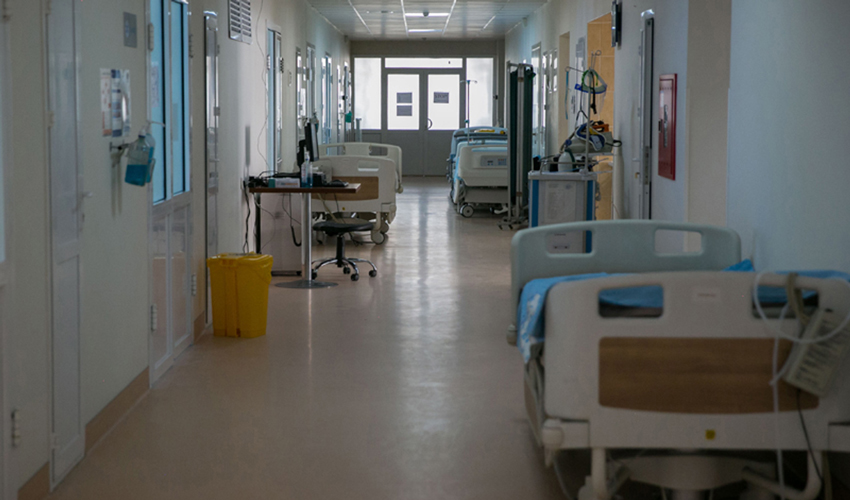
Two consecutive 7.7 and 7.6 magnitude tremors on February 6, 2023, occurred in Hatay, Adana, Adıyaman, Diyarbakır, Elazığ, Gaziantep, Kahramanmaraş, Kilis, Malatya, Osmaniye and Şanlıurfa provinces, affecting more than 14 million people in Turkey and parts of northern Syria. The death toll has exceeded 53,000, of which some 45,000 are in Turkey. Over 107,000 residents in the earthquake zone were injured and maimed.
The scale of the disaster was indeed horrifying. The whole country was declared mourning for 7 days, a state of emergency was introduced in the affected areas. Search and rescue operations continued both day and night. Brigades from 93 countries of the world arrived to help Turkish rescuers. A total of 650 thousand people were involved in the elimination of the consequences of the disaster, including 11,488 who came from abroad. People who lost their homes were temporarily accommodated in 350 tent and 414 container cities.
A detachment of 56 people and 12 special cars from the Republic of Moldova also took part in the rescue work. On the first day of work our rescuers found and extracted a 3-year-old boy alive from under the rubble, on the fourth day after the earthquake. It was a real miracle for many people. At the end of the Moldovan rescuers’ mission, Turkish President Recep Tayyip Erdogan awarded them with a medal and thanked them for their courage and professionalism.
The Moldovan rescuers worked in Hatay province, one of the most affected areas. The administrative center of the province, the city of Antakya, was almost completely destroyed. And it was there, on November 4, 2025, that Turkey’s Minister of Environment, Urbanization and Climate Change Murat Kurum told journalists from almost two dozen countries about how not only the destroyed cities, but also the country as a whole are being restored.
Every hour – 23 dwellings
Less than 3 years after the disaster, Turkey is approaching the final stage of a large-scale reconstruction program. According to Murat Kurum, about 70% of the planned works in the affected region have already been completed.
For more than two years Turkey has invested about $75 billion in new construction. Almost 200 thousand workers are engaged in reconstruction on 3.5 thousand construction sites at the same time.
“We are conducting one of the fastest and most coordinated reconstruction efforts in the world,” the Turkish minister told foreign and local journalists. – This scale and speed of reconstruction has never been seen anywhere before. Here are the dry figures. Every hour, 23 new houses are built and delivered to families – a total of 550 houses per day.”
Such pace allowed to ensure the commissioning of 350 thousand new houses by mid-November 2025, and by the end of the year it is planned to complete the construction of 453 thousand houses. As a result, Murat Kurum noted, two-thirds of the affected families have already returned to their new homes, marking an important milestone in the largest reconstruction initiative in the country’s history.
It’s not just houses that are being built. The earthquake damaged roads, bridges, utilities, social facilities and urban infrastructure. All this is being built anew – comprehensively and at a new qualitative and technological level. More than 11 thousand kilometers of water supply and sewerage networks have already been laid, new roads are being built and damaged ones repaired, schools, kindergartens, stores, sports facilities and recreation areas are being built next to residential buildings.
The journalists then visited some construction sites with Minister Murat Kurum, including the historic parliament building, Ataturk Avenue and the center of Antakya. The minister emphasized to the foreign journalists that while providing housing for the affected residents remains an absolute priority, the restoration of historical monuments in the region also receives special attention: “Revitalization work continues in the area to restore historical monuments to their original appearance. The Asi River, which we call the heart of the city and is crucial to our region, is also being revitalized here. We are creating a quiet place for Hatay to spend time. We have built 86,000 residential houses in Hatay, and this number will increase to 153,000 by the end of the year. Hatay, with its history and culture, the cradle of civilizations and the city of brotherhood, will stand on its feet.”
At the same time, we asked the Minister and the builders whether such a pace of work does not affect the quality of the constructed objects, which in the zone of increased seismic activity may result in new tragedies. Representatives of Emlak Konut Company, which is carrying out works on Ataturk Avenue, assured that they not only took into account the new seismic realities, but also laid safety and quality standards “with a reserve”. Piles 18-22 meters long are driven under the foundation of each new house, a reinforced concrete “cushion” is created, waterproofing works are carried out, and only after that the erection of the building itself begins. Engineers and designers also took into account other negative aspects that were affected during the earthquake. Depending on this, they plan the number of storeys of buildings, the distance between them, use more modern technologies for connecting structures, etc.

“Housing project of the century” – the answer to the “disaster of the century”
Although the meeting with international journalists focused mainly on the results of the reconstruction of the destroyed areas, Minister Murat Kurum emphasized to the media representatives that Turkey has learned lessons not only from the fact of the earthquake itself and its aftermath. “We have gained invaluable experience that acute social and infrastructural problems can be solved quickly, qualitatively, with dignity,” he said. – That is why we are not just rebuilding what was destroyed. We intend to use the experience gained during this reconstruction process to transform the entire country. This experience will shape future urban development plans not only here in the affected region, but throughout Turkey. Including the ambitious Century Housing project, which aims to build 500,000 new homes in all 81 provinces of the country. Currently, almost half of the housing being built here is categorized as social housing, which makes it possible to provide the least well-off families with their own homes. We believe it is right that this approach should be a key element in the implementation of our national housing strategy.
“Housing Project of the Century” was launched nationally in Turkey at the end of October this year. Speaking at the event, the country’s President Recep Tayyip Erdoğan said, “In Turkey’s century, we are initiating the mobilization of funds for the construction of 500,000 social houses. It is our duty to raise the living standards of our people, ensure that the state fulfills its social obligations, work without interruption and become one of the most developed and prosperous countries in the world.”
During three-day trips to the cities destroyed in the earthquake, it was sometimes hard to believe that a year or two ago these places were vacant lots or ruins of houses and other objects. Today, these are lined up residential areas, fashionable offices and respectable stores, brand new schools, sports grounds and other social facilities. The work is really boiling. The common phrase “dust column” is not an aphorism here – cars with construction materials, waste, earth pulled out when digging excavations, etc. are constantly running along the roads. The roads themselves are also everywhere in the process of construction or modernization. This makes the dust in the air constant.
But it is temporary. Life is returning to the affected regions. And the authorities’ intention not to limit themselves to the construction of social housing only in the disaster region, but throughout the country, means only one thing – Turkey will emerge from the “disaster of the century” stronger, more united and prosperous. The Turks themselves are sure of this.
Dimitri CALAC,
Chisinau-Hatay











